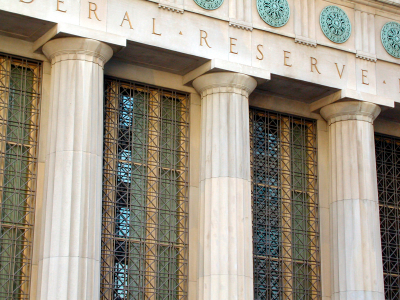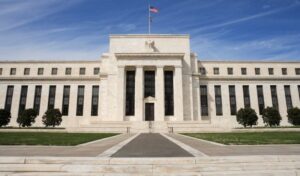
New rules amend capital-to-risk ratio requirements.
The Federal Reserve Board recently issued two interim final rules that bring the U.S. closer to satisfying internationally recommended capital safeguards for bank holding companies. In an earlier statement, Chairman Ben Bernanke emphasized the new capital requirements are “a key element of the Board’s regulatory reform package to promote financial stability.”
The interim final rules raise capital ratio requirements for banking institutions. The Federal Reserve uses capital ratios to measure an institution’s liquidity – its ability to satisfy liabilities. By measuring capital ratios, the Federal Reserve seeks to ensure that institutions under financial stress will weather cash outflows and continue operations. This would prevent undercapitalized institutions from contaminating the wider economy during severe financial crises—for example, if they fail to satisfy exchanges or deposits, as they are due.
The Board’s interim final rules phase in Basel III capital recommendations under the authority of the Dodd-Frank Wall Street Reform and Protection Act. Basel III is a voluntary international standard for capital requirements presented in 2011 as a response to the financial crisis, and endorsed by G-20 leaders, 44 central banks, and 27 global jurisdictions.
The Fed approved the final capital rules in July, and the latest interim final rules introduce a timeline for implementation. One of the interim final rules requires institutions with $50 billion or more in consolidated assets to incorporate the new capital requirements during the next round of stress tests beginning on October 1. The second rule provided a one-year transition period to organizations with consolidated assets totaling between $10 and $50 billion.
According to the Federal Reserve, the new rules improve safeguards by “increasing the quality and quantity of capital held by baking organizations.” They do so by redefining common equity tier 1 capital, and increasing the common equity tier 1 capital ratio.
The tier 1 common equity capital ratio is a formula used by Federal Reserve to judge a bank’s financial health during and after the financial crisis. The ratio measures “tier 1 common equity capital” against “risk-weighed assets.” Tier 1 common equity capital refers to common stock, retained earnings, and other assets that allow a firm to withstand financial stress by offering liquidity. Risk-weighed assets are a measure that weighs the risks, and returns, associated with certain assets. The ratio is therefore intended to reflect the bank’s ability to meet obligations when certain risks are realized.
The Board’s interim final rules enact, effective immediately, the capital rules finalized in July. The new rules suggest a 4% common equity tier 1 capital ratio for 2014, and expect a 4.5% threshold after 2015. Although the Federal Reserve currently prefers a 5% capital plan tier 1 common ratio, the Board notes that “the combination of changes in the methodology for computing the common equity tier 1 ratio and the minimum level of 4.5 percent” will result in a more stringent requirement for bank holding companies.
As early as 2011, the Fed announced publicly that it would implement new capital requirements for U.S. bank holding companies, and “specially designated” non-bank financial firms.
The capital plans were proposed under section 165 of the Dodd-Frank Wall Street Reform and Protection Act, which empowers the Board to develop capital, leverage, liquidity, and risk management requirements. However, Dodd-Frank does not specify the character or extent or those capital plan requirements, and the initial Board release did not point to additional sources for its proposed regulation. The final and interim final rules confirmed that the Board’s revised capital plans implemented the specific capital suggestions found in Basel III.
The potential effects of the new Basel III requirements have been scrutinized by a number of researchers and academics.
A cross-country analysis of bank behavior after Basel III, a working paper published by a professor and a researcher affiliated with the International Monetary Fund (IMF) predicted that Basel III would reduce the volume of loans by as much as 4.6% in countries that experienced a banking crisis, and predicted an increase in “shadow banking,” or banking activities that are deliberately kept from balance sheets to avoid regulation. A separate IMF staff report argued that it would result in increased lending rates, reduced dividends, and lower credit availability—effects which have been reported since Basel capital requirements were implemented.
The Organization for Economic Co-operation and Development has reported that Basel III implementation would reduce GDP at an annual rate between 0.05 and 0.15, as banks pass their costs to retail customers.
In a memo dated to July, attorneys for the Board reasoned that any burdens on banking organizations resulting from the new capital requirements would be outweighed by the benefits of reducing systemic risk to the financial system.
Some academics have expressed concern from different perspectives, questioning whether the standards go far enough to effectively reduce that risk.
Andrew Scott, a professor at the London Business School, recently argued that Basel III capital ratios are too low to contain large-scale bank collapses, and thus prevent bailouts in times of acute stress. Instead, he proposed a minimum capital ratio requirement of 20-25%. Vania Stavrakeva, a second professor from the London Business School, has argued that Basel III may actually encourage banks to use derivative contracts to routinely offset risk—behavior that might actually cause large liabilities during a financial crisis.



